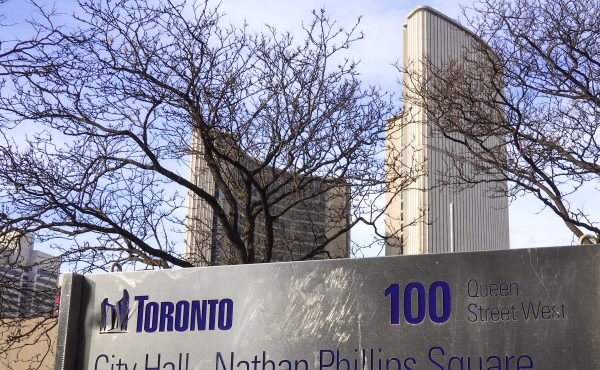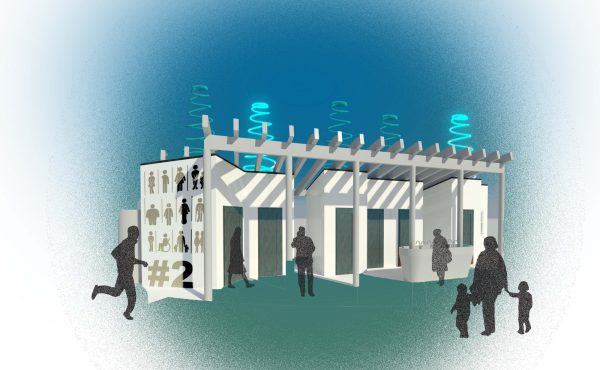
Back in January I posted about the Royal Ontario Museum‘s attempt to get out of paying the usual fee to the city for the encroachment on public space by the museum’s new “crystal” extension.
Recently, new Ward 20 councillor Adam Vaughan has arranged an agreement with the ROM whereby it will provide 5 March Break Day Camp spots to children living in local community housing projects in exchange for waiving the fee. The idea still needs council approval. Vaughan explains in his newsletter:
The alternative payment method will ensure that local children and parents who might have had problems paying for day care or programs during the March Break will now have access to a major community institution and the city’s rights and responsibilities to charge encroachment fees has not been compromised.
While it seems like a worthy cause to support, I’m kind of disappointed. My reason is that it brings us back to the deal-making culture of city council that has caused so many problems in recent years. Regulations should not be a starting point for negotiations. They should be rules that everyone follows equally. Once people start getting exceptions and special arrangements if they push hard enough, we end up with the chaotic and unsatisfactory situation that currently afflicts city planning.




13 comments
Don’t you think you’re nitpicking a bit in this instance.
The ROM is much more a part of the public sphere any run-of-the-mill commercial building. It’s certainly a cultural space, if not public space in and of itself. It seems to me a little bleeding between those spaces only increases people’s interaction with the building.
Leading-edge cultural cities don’t let red tape stand in the way of something that only enhances the public sphere.
I gotta say I’m not too dissapointed with the idea. I think the ROM looks great & if it takes up some public space so be it. I agree that certain developments should not be allowed to make these deals, but there should be exceptions, and this is one of them, imo.
Why only five?
Couldn’t the city have bartered their way to say 10 or 15?
Speaking in general terms, though, how is this different from getting a variance to build a deck or reduce side yard setbacks? Planning rules need flexibility.
The fact that I regard the ROM “Crystal” as an abomination may colour my view, but the argument goes in general regardless of whether you love or hate a building.
If we are prepared to put up with whatever crap a developer builds provided that they sweeten the pot with some tradeoff, then all the nice plans and guidelines and design criteria are not worth the paper they are printed on.
I may be wrong, but I think people are missing the point: the ROM asked for a waive of the fee for the public space area they are “taking over”. If the rules say you pay X amount for incursion into that space, you should pay it. Dylan’s post did not say the incursion was a bad idea, but that the ROM had made the decision to “fight” the fee. If the part of the building that will be intruding into public space costs over $100 million I believe the ROM can afford to pay the City’s fee.
Instead of paying that fee, they have brokered a deal. This undermines the planning process that if you don’t like the rule you can somehow get around it.
If the City had decided that the ROM, as a cultural institution, should be given tax breaks that’s fine. But obviously this fee was not part of any tax break package (if any breaks exists at all I’m not sure).
I don’t have any problems with this deal.
The ROM is an institution that works for the public good and the expansion doesn’t encroach on a public right of way such that additional accomodations are required at the cost of the City. At the same time there is significant and demonstrated need in some Ward 20 communities for subsidized spaces in programs like the March Break camp. In terms of what the ROM can offer, Vaughan probably couldn’t have extracted anything more valuable (though possibly more than five spaces).
Generally speaking, I think deals are a grey area that require the good judgement of a councillor. Deals can go a long way toward building a neighbourhood or become scandals that plague a community for years.
If a deal isn’t the right approach to take then I would expect a councillor to refuse to negotiate. But if there is a benefit that can be had that is more valuable than what a one-size fits all policy allows for then I would expect a councillor to use the tools available to him/her.
Either way, at the very least, a councillor will be held accountable through the democratic process for the deals they make.
I love the crystal and I think this is a pretty decent deal. I hope that the 5 spots for the day camp will be a permanent gift to the community, to continue each year.
“Permanent gift?” The five day-camp spots are offered in lieu of, as per the original article, a $2,400.00 annual fee.
As long as those spaces are provided each year, and as long as they’re worth about $500.00 each, it’s a reasonable deal. Bit of a stretch to call it a gift, though.
> Sean – the difference from a variance is that there is a recognized formal process in place for deciding whether a variance should be allowed or not (because, as you say, planning rules need flexibility). It’s a process available to every property owner.
The ROM went through that process to get the encroachment allowed in the first place, and part of that process was an agreement by the ROM to pay the city rent or compensation for the encroachment into public space.
There is no formal process for getting out of that rent once the variance has been allowed. But the ROM is a big enough player that it kicked up a fuss and got an exception made.
The difficulty here is that the amount ROM had to pay was $2400. How much would it have cost the City to collect this money and then where would it go – likely disappear in the City books. At least this way some poor families would have a benefit.
The real issue is that the crystal should NEVER have been built.
Seems as though Vaughan did the sensible thing.
Should the ROM have not been built too?
My comment was about the “crystal” — not about whether there should be a museum.